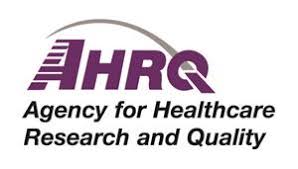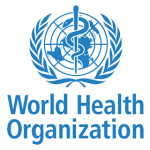Spotlight Patricia Herman, RAND: Four Papers Focus on Patient Use of Provider-Based Nonpharmacological Care for Chronic Spinal Pain
 We asked AACIPM Advisory Committee member, Patricia Herman, ND, PhD, Senior Behavioral Specialist, RAND Corporation, why this series was created.
We asked AACIPM Advisory Committee member, Patricia Herman, ND, PhD, Senior Behavioral Specialist, RAND Corporation, why this series was created.
“Our hope was to provide some real-world information to payers regarding how patients use ongoing provider-based care for chronic conditions. Of course, these are all based on observational data, but at least it’s a beginning.”
Comprehensive integrative pain management includes access to various evidence-based, safe and effective services based on individual needs and preferences of the person with pain. This month, Pain Physician published the final article in a series of four papers addressing how people use chiropractic care on an ongoing basis for chronic spinal pain. The first paper and the data collection were funded by NCCIH and the last three papers were funded by NCMIC Foundation.
Dr. Herman added, “We haven’t found any other papers that addressed these issues. That’s why we did these studies, and we happened to have the data for chiropractic care.”
As many clinical guidelines recommend nonpharmacological interventions for chronic spinal pain, there is still much to be understood. These studies about the services provided by Chiropractors offer useful insights into the use of chiropractic services. When, why, and how are chiropractic services chosen as the treatment of choice by patients with chronic spine pain?
Click below to find the four studies with a comment from Dr. Herman about each paper.
Recordings Available: Veteran and Family Well-Being Series
Chronic Pain Centre of Excellence for Canadian Veterans

AACIPM was proud to be a partner with the Canadian Chronic Pain Centre of Excellence (CPCoE) to share this inaugural series in the US. These symposia feature presentations from respected researchers from Canada and the U.S. discussing the evolution of pain management and current best practices in evidence-based interdisciplinary care. A common theme across all four one-hour symposia is the idea of prioritizing the overall quality of life of a Veteran and their families using a whole-person, multidisciplinary approach to guide their chronic pain management programs.
- Part I: An Evidence-Based Approach to Pain Management
- Part II: Measuring the Effectiveness of Pain Management
- Part III: Stepped Care Approach to Pain Management
- Part IV: Outcomes of Interdisciplinary Pain Management
Announcements – Health & Human Services
 FDA Workshop and Request for Comments
FDA Workshop and Request for Comments
The Federal Drug Administration (FDA) has requested public comment by February 11, 2021 on evaluating the Opioid Analgesics Risk Evaluation and Mitigation Strategy Education Program on Prescribing Behaviors and Patient Outcomes.
In past requests for comments, we have advocated for inclusion of balanced, comprehensive, interdisciplinary pain education as part of REMS. We believe all entities have accountability to help providers understand effective integration of non-pharmacological therapies as part of an interdisciplinary, biopsychosocial approach to pain management. Read more
AHRQ Request for Supplemental Evidence and Data Due February 16
 AHRQ released their protocol for interventional treatments for acute and chronic pain in December. They have issued a request for supplemental evidence which is due by February 16th.
AHRQ released their protocol for interventional treatments for acute and chronic pain in December. They have issued a request for supplemental evidence which is due by February 16th.
It is expected that there will be limited supporting clinical data for many of the injections listed. We are seeing innovation and progress showing the integration of interventional pain management with other wellness-related therapies improve outcomes and set up for longer lasting success.
You can find more information from AHRQ at the link below.
AACIPM Facilitated a Group Response to AHRQ for their Recent Request About Integrated Pain Management
In case you missed it, during Thanksgiving week, AHRQ also issued a request for comment regarding their research protocol for integrated pain management programs. In response, AACIPM facilitated drafting a response signed by more than seventy (70) respected individuals and organizations signed before the deadline on December 21.
Upcoming Conferences – Pain | Optimizing Health
Virtual Summit on Balanced Pain Management on Feb. 2
The Alliance for Balanced Pain Management is convening their 7th annual summit on February 2nd at 11:30am-2:00pm ET.
The summit will convene patients, health care providers, advocates, regulators and legal experts to explore pain policy and patient-centered pain care. Some highlights from the agenda linked below are:
Keynote: Patient-Centered Pain Care Now
Shari M. Ling, MD, Centers for Medicare and Medicaid Services
Congressional SUPPORT: Advancing Coverage for Multidisciplinary Pain Care
Moderator: Cindy Steinberg, U.S. Pain Foundation
Suchitra Iyer, PhD, AHRQ (Agency for Healthcare Research & Quality)
Martin Schultz, Office of Congresswoman Jackie Walorski (R-IN)
Policy Predictions: Pain Management under President Biden
Kentuckiana Health Collaborative (KHC) 2021 Annual Conference
 AACIPM values our relationships with collaborators and partners, and Kentuckiana Health Collaborative is one of them. Their annual conference has a phenomenal line up of speakers to address equity and value in optimizing health – see more at the link below.
AACIPM values our relationships with collaborators and partners, and Kentuckiana Health Collaborative is one of them. Their annual conference has a phenomenal line up of speakers to address equity and value in optimizing health – see more at the link below.
Optimizing Health 2021
Equity, Value, and Well-being – March 9,10
 WHO Issues New Guidelines on the Management of Chronic Pain in Children
WHO Issues New Guidelines on the Management of Chronic Pain in Children
New WHO Guidelines on the management of chronic pain in children provide recommended physical, psychological and pharmacological interventions for pain relief in children aged 0-19 years. The guideline supports Member States and their partners to develop and implement national and local policies, regulations, pain management protocols and best practices for pain relief.
Pharmacovigilance and Healthy Pain Management
 This week, The Hartford’s Adam Seidner, MD, MPH, Chief Medical Officer (and AACIPM Advisory Committee member) spoke at the National Workers’ Compensation and Disability Conference on alternative approaches to opioid pain management in workers’ compensation claims.
This week, The Hartford’s Adam Seidner, MD, MPH, Chief Medical Officer (and AACIPM Advisory Committee member) spoke at the National Workers’ Compensation and Disability Conference on alternative approaches to opioid pain management in workers’ compensation claims.
His presentation explored both pharmacologic and nonpharmacologic methods to effectively treat pain.
“The main thing is the importance of a holistic approach, looking at the whole person,” he said. “It comes out of the biopsychosocial approach, and bringing in the concept of an integrative approach. Try to tailor the therapy for that individual, not everybody is the same; it’s not a cookie cutter approach.” — Adam Seidner
AACIPM Year-End Review
We’re all in this together; let’s keep this momentum through 2021!
A Paradigm Shift to Advance Comprehensive Integrative Pain Management
Year-End Review 2020
AACIPM’s 2020 Highlights

A Paradigm Shift: Partnering & Aligning to Change Policy & Practice
AACIPM is a leader thoughtfully connecting key stakeholders and influencers towards the paradigm shift we all want to see – person-centered, evidence-based, comprehensive, integrative, integrated, interdisciplinary pain management.

Message from the Director
 I think everyone hit the ground running into 2021, and AACIPM is no different. Our focus is on strategic collaborations and partnerships to contribute towards this paradigm shift to whole-person pain care.
I think everyone hit the ground running into 2021, and AACIPM is no different. Our focus is on strategic collaborations and partnerships to contribute towards this paradigm shift to whole-person pain care.
We look forward to sharing more resources and symposia with you over the year. Stay tuned for more information coming soon about the new repository of information that will launch later this Spring.
Onward and Upward!
Amy
Resources
 NCCIH Updated Fact Sheet – Mind and Body Approaches for Chronic Pain
NCCIH Updated Fact Sheet – Mind and Body Approaches for Chronic Pain
A growing body of evidence suggests that some mind and body practices, such as acupuncture, hypnosis, massage, mindfulness meditation, spinal manipulation, tai chi, and yoga, may help to manage some painful chronic conditions. Check out the updated fact sheet for more information on the use of nondrug approaches for pain.
NEW! Telehealth Resource
Telehealth is now a mainstay of patient-centered care. Patient & Provider Advocates for Telehealth have launched their website with the aim of keeping telehealth within reach.
Member organizations work to secure the benefits of telehealth through sound and informed public policy. If you are interested in joining as a member please use this link to submit your information.
Relevant Reading
![]()
Visit Frequency and Outcomes for Patients Using Ongoing Chiropractic Care for Chronic Low-Back and Neck Pain: An Observational Longitudinal Study, Pain Physician, January 2021
Spreading of Pain in Patients with Chronic Pain is Related to Pain Duration and Clinical Presentation and Weakly Associated with Outcomes of Interdisciplinary Pain Rehabilitation: A Cohort Study from the Swedish Quality Registry for Pain Rehabilitation (SQRP), Journal of Pain Research, January 28
Treatment Preferences for Chronic Low Back Pain: Views of Veterans and Their Providers, Journal of Pain Research, January 27
Pain Symptoms in Patients with Coronavirus Disease (COVID-19): A Literature Review, Journal of Pain Research, January 26
Somatosensory Acupuncture Modulates Neurochemistry to Reduce FM Pain, Clinical Pain Advisor, January 25
How Silence and Meditation Help Me Feel Better, Endometriosis News, January 22
Lingering Symptoms of COVID Are a Reality for Some—Here Are 7 Stories, Self, January 22
Mindfulness Can Alter Brain’s Perception of Pain in Cancer Survivors, Breast Cancer News, January 18
The 5 Scary Symptoms COVID Patients Can’t Get Rid Of, New Study Says, Best Life, January 16
Treatment Improves Chronic Pain Outcomes Associated With Poor Sleep, Psychiatry Advisor, January 12
This Is The Heartbreaking Reality Of Being A Mom With Chronic Pain, HuffPost, January 7
Feedback
We welcome your input! What do you like? Do you have a contribution for an upcoming newsletter? Send us your comments, suggestions, or contributions.
